Mani Ratnam’s films are known for their layered storytelling. Ponniyin Selvan is no different, packed with scenes that become more meaningful with an understanding of Tamil history. Here I will share my interpretations and observations, which may help explain Ponniyin Selvan better.
The Entrance of the Enigma: Aditya Karikalan
Aditya Karikalan (Chiyaan Vikram), the character, is introduced in an intriguing manner, with his first appearance shrouded in fog. The moment he steps onto the battlefield, the fog clears, revealing a warrior prince carrying a heavy heart.
The misty backdrop is Mani Ratnam’s creative method to hint at Aditya’s obscure past. With this single shot, Maniratnam establishes that he is coming from a shady past, and we are not clear about his past.
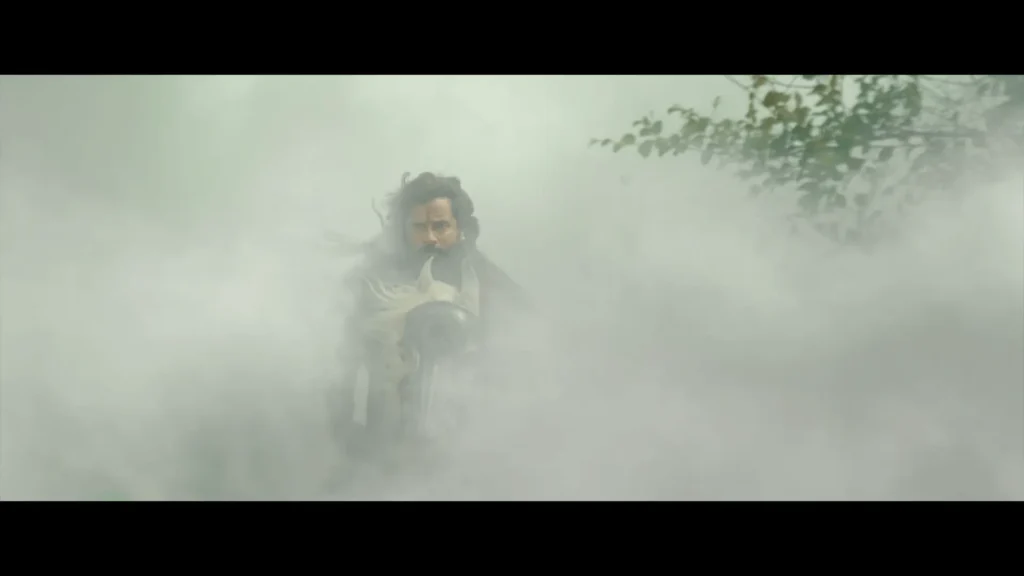
We are hearing about his past through his conversations with Parthibendran and Kundavai in multiple instances.
As per the historical narratives and the novel, Aditya is stubborn, sticking to his decisions regardless of the circumstances. But no one really knows, who he really was, or what he was going through.
Shadowed Past and Victorious Present
Now, let’s pick another scene. After winning the Nolamba dynasty, Aditya explains his past and agony to Parthibendran.
It’s all dark, and Aditya’s face is not clear; we are getting only one half, and if you look at the background, it’s misty again. I believe it’s symbolic of the shady past of Aditya Karikalan.

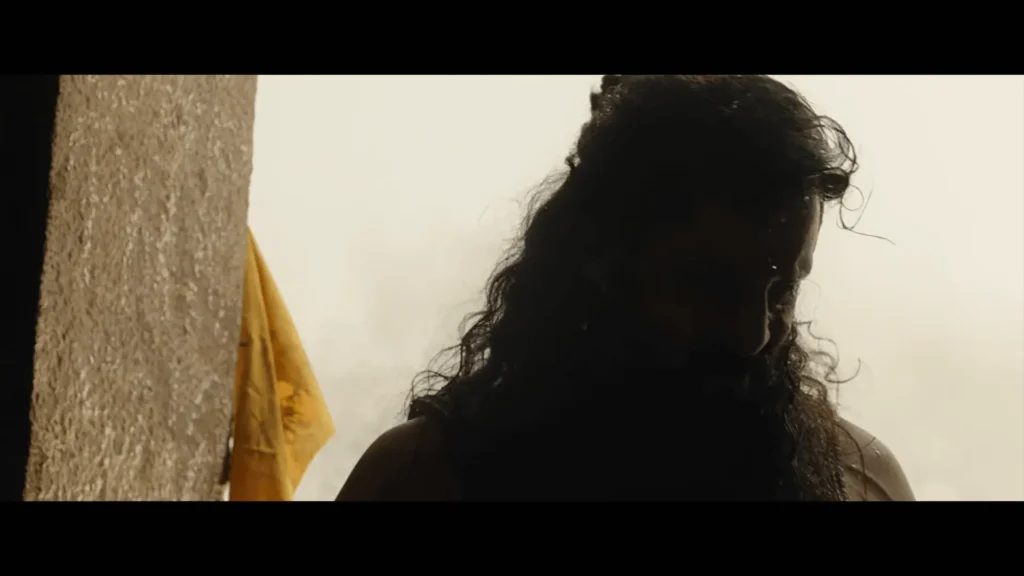
The deliberate symbolism points towards Aditya’s murky past. When the painful past is shared, and Aditya waves the flag, the frame transitions into sunlight.
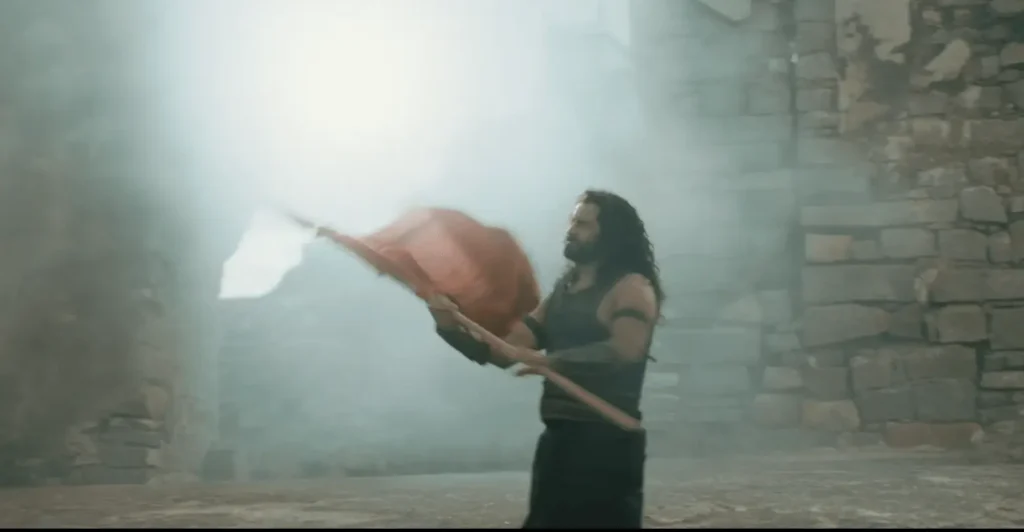
This change implies the flag wave as a metaphorical act to ward off the clouded past. War, Rage, and Victory are his ways to clear off the painful and obscure past around him.
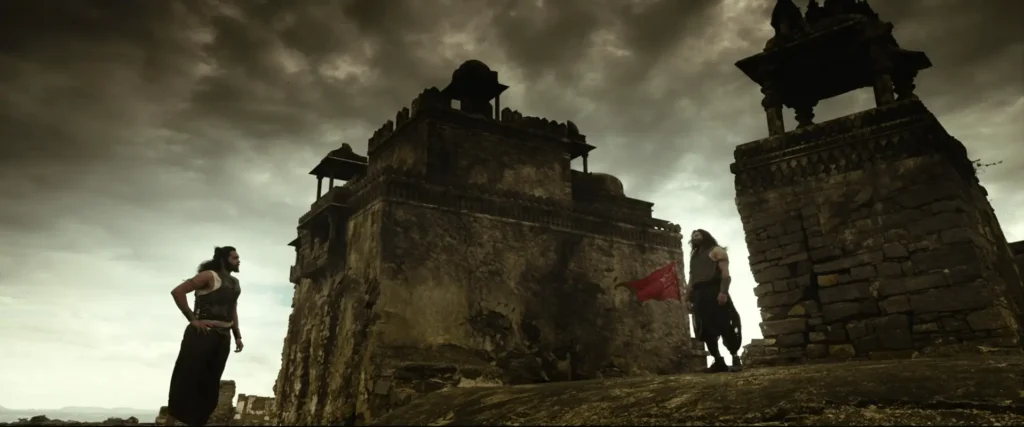
The choice of costumes for Aditya is noteworthy. He is always seen in black and red, contrasting with Arulmozhi, who wears pristine white. This difference in colour choices signifies the differing characters and histories of the two.
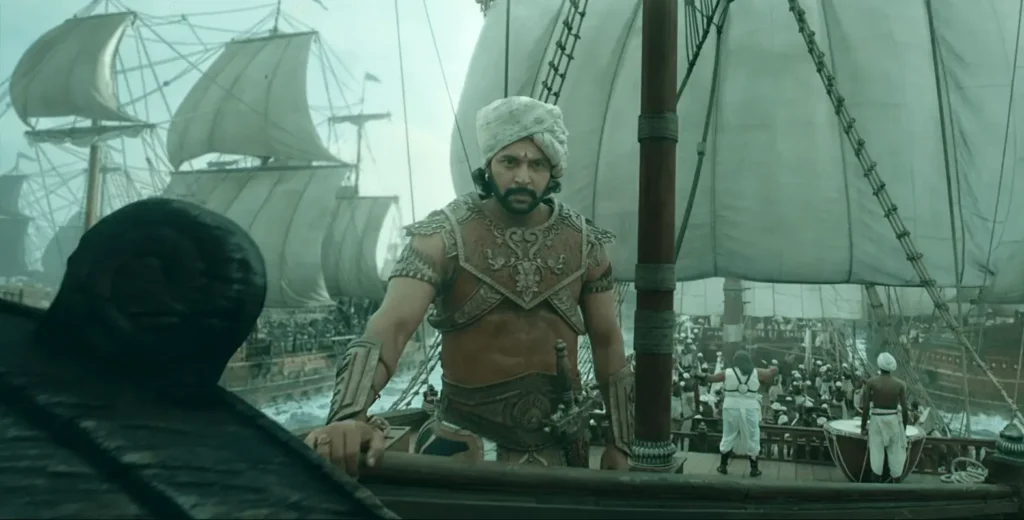
Parallels with Karnan from Mahabharatha
This is actually a wild theory. Thanks to Sandeep (Nanban 🙂 )
Aditya Karikalan’s portrayal has parallels with Karnan from Mahabharatha.
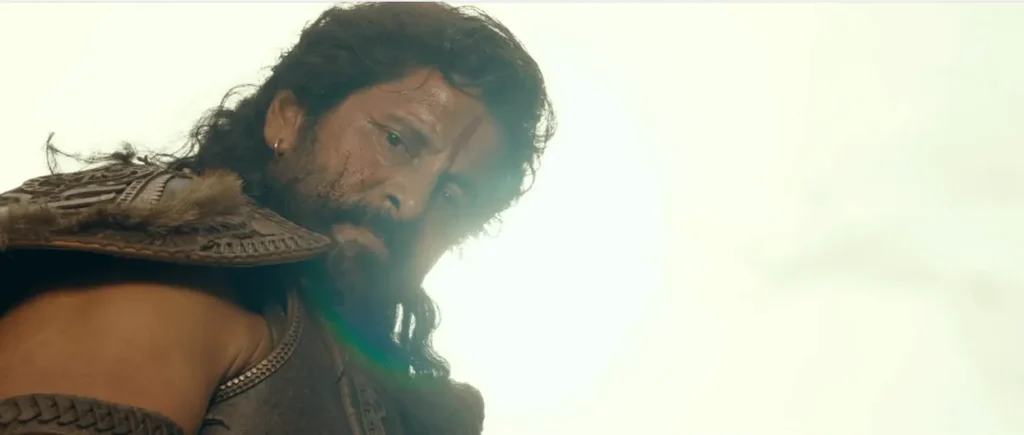
During Aditya’s triumphant moments, a sun glare can be seen in the backdrop. Ravi Varman (the cinematographer) brilliantly incorporated the sun glare as an aura around Aditya. Contrarily, when Aditya is depicted in a state of sadness, the sky appears cloudy, or he is shown in darkness. Even his death happened at night.

Aditya asks Nandini if it is hard for her to look at him. Then he waves off all the lamps and dies in the darkness.
In the Mahabharata, even Lord Krishna wept at Karna’s death because Karna was kind, loyal, and understood his dharma. However, he was cursed by Bhumi Devi for disrespecting her. It was just his luck or curse spoiled him. He was unlucky as much as Aditya.
Aditya was also cursed. Nandini asked him only one thing, to spare Pandiya’s life, but he ignored her plea. He disrespected her and hurt her. That was the sin he was carrying (metaphorically, Aditya says, “I consumed poison that day”).

A dying Karna asked Krishna to inform his mother Kunti of his death. He could have asked Krishna to give victory to Duryodhana and bring his armies back to life. However, he didn’t. He wanted his mother to proclaim publicly that he was her son and that he was not of low caste. He was looking for acceptance.
Aditya’s last words were a request for Nandhini to tell him that he still lives in her heart. He was looking for acceptance.
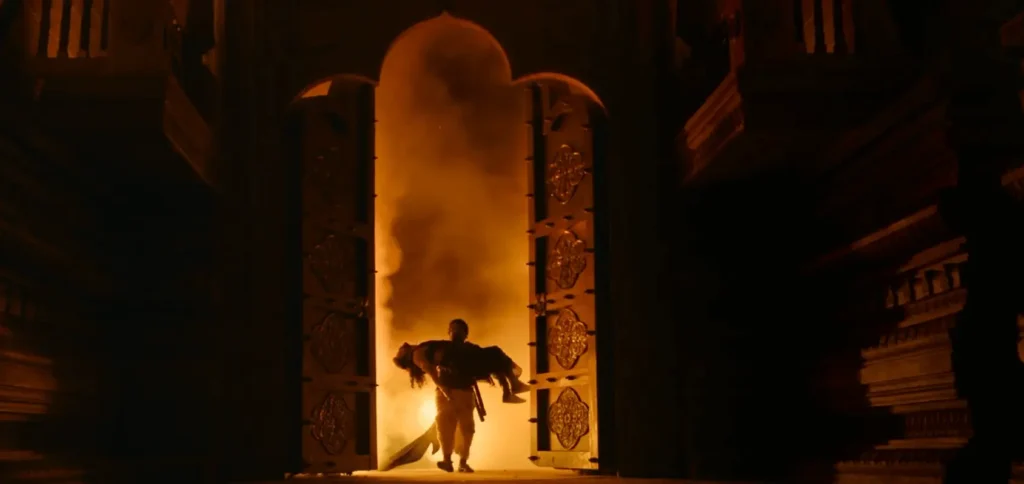
The epic beauty of the scene is the way Vanthiya Thevan carries Aditya’s dead body. The background is filled with smoke, just like when Aditya was first introduced in PS-1. It is a shady mystery, and we could never really understand Aditya, even his death remains a mystery.
The Dance of Victory: Devarattam
Devarattam, a traditional dance form, was performed by kings and warriors to celebrate victory, particularly in the Pandyan and Chola dynasties. During Vanthiyathevan’s visit to Kadambur in the movie, however, the dance depicted appears to align more with “Kecak” than Devarattam.
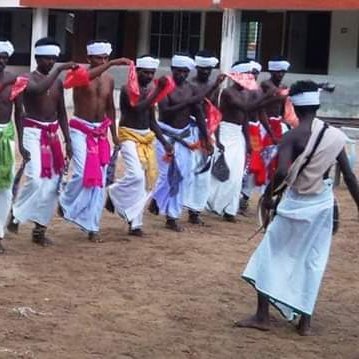
Some argue that Devarattam took inspiration from Kecak, but this theory doesn’t holds historical back. The Chola’s naval invasions in Southeast Asia, a possible channel for cultural exchange, started only in 1025, while Aditya Karikala and the Pandyas were active before 1000 CE. Additionally, Southeast Asian rulers like those from Srivijaya, who had close relations with the Pala Empire in Bengal, did not seem to have left any influence on the dance form.
The dance is based on the story of the Ramayana and is traditionally performed in temples and villages across Bali (Indonesia).
The Clash of Titans: Kundavai-Nandini Confrontation Scene
The Kundavai-Nandini faceoff scene is one of the most epic scenes in Ponniyin Selvan part -1. The rivalry between two women is on full display in this scene.
But I feel, many might have misread it. Here is my interpretation.
Background: Nandini has deep resentment towards Kundavai, blaming her for all her miseries. Nandini believes that it was Kundavai who got her expelled from the palace and constantly made her feel inferior due to her lineage. In a bid to gain power, Nandini manipulates Periya Pazhuvettayar and considers Madurantakan’s claim to the throne. She keeps Sundara Chola, Kundavai’s father, under house arrest, cutting him off from others for easy manipulation.
Learning about Nandini’s scheme from Vandiyathevan, Kundavai decides to confront her at the Tanjore palace. As the dramatic background music “Saayam Sanchare” (Evening- where Day and Night meets) fills the air, their coded conversation unfolds:

Nandini: “Upon your visit, Tanjore palace itself has become beautiful.”
Kundavai: “But I heard all the beauty in the world has been kept in the Tanjore palace.” (hinting at Nandini’s beauty)
Nandini: “Yes, beauty is held captive here indeed.” (referring to Sundara Chola being under house arrest, Sundara means ‘beautiful’)
Kundavai: “Captive? Does the golden beauty [Sundara Chola] not adorn the throne?“
Nandini: “Yes, it’s gold, old gold.” (referring to the king as old)
Kundavai: “Faded gold is the most precious.”
Nandini: “Even golden shackles are still shackles.” (indicating Sundara Chola is under her control, regardless of his position)
Kundavai: “The key to the shackles are in our hand anyway.” (asserting her ability to free Sundara Chola)
Nandini: “No one can defeat the princess (Kundavai) in an argument.”
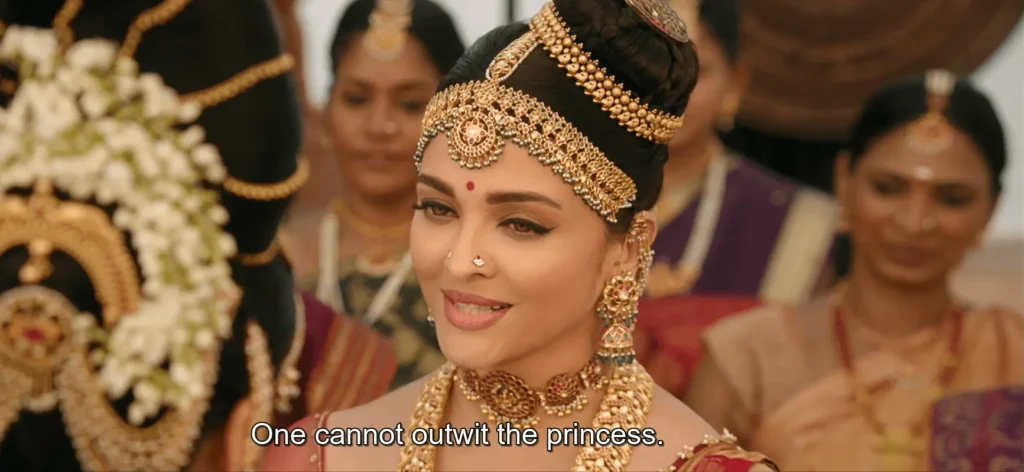
Following this heated exchange, Kundavai smiles as the background score saayam sanchare intensifies. The combined genius of AR Rahman, Ravi Varman, and Mani Ratnam in this scene is simply beyond words.
Kundavi is envious of Nandini’s beauty; Nandini is jealous of Kundavi’s power; and throughout her life, Nandini feels inferior to Kundavi because of the power she holds. You will get all this from this scene, if you read it well.
Nandini: The Ever’green’ Queen
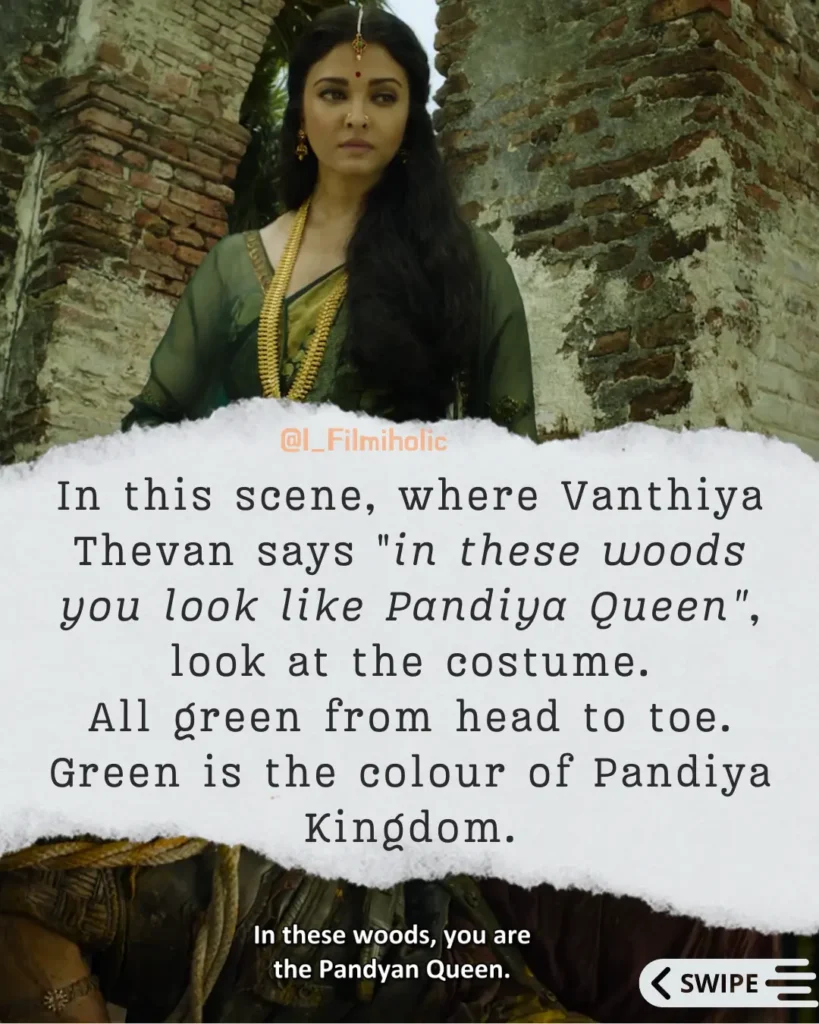
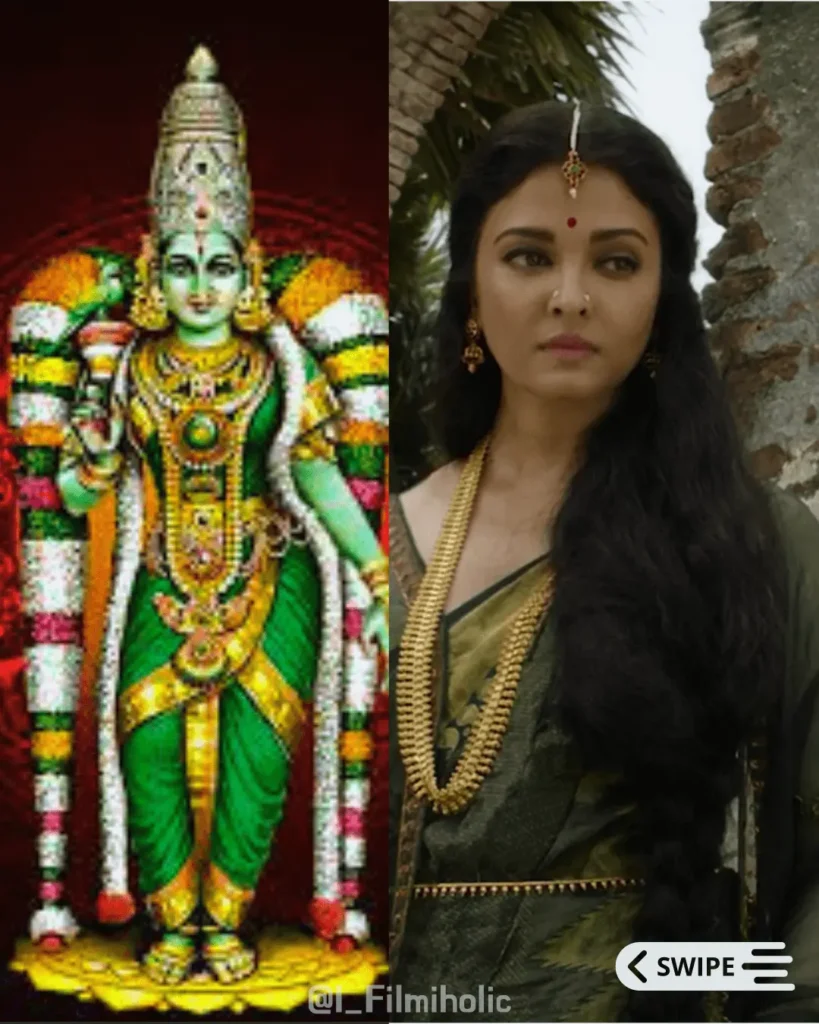
Pandiya’s Fish Eyed(Meenakshi) diety is green. Crafted from a single large emerald stone, the goddess is believed to be Vishnu’s sister, just as Nambi(Jayaram), a vaishnavite, is Nandini’s brother.
Echoes from the Past and Authentic Settings
There’s a scene where Vandhiyathevan ingeniously escapes from the Pazhuvettarayar guards, reminiscent of chase sequences from the movie ‘Thiruda Thiruda’. The elements that Vandhiyathevan disturbs in the crowd — from buttermilk to puffed rice — align perfectly with the setting of 10th century Thanjavur, enhancing the authenticity of the scene.
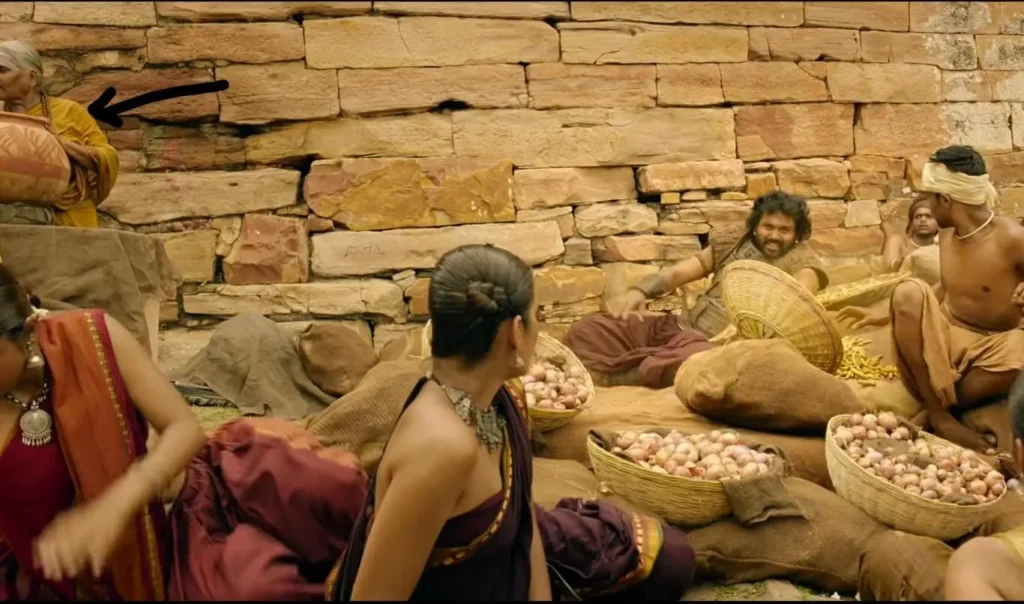
Mani Ratnam also adeptly portrays the flourishing trade relations of the time. The period from 900 to 1300 CE, termed the Early Age of Commerce in Southeast Asian history, saw burgeoning trade ties between China and South India.
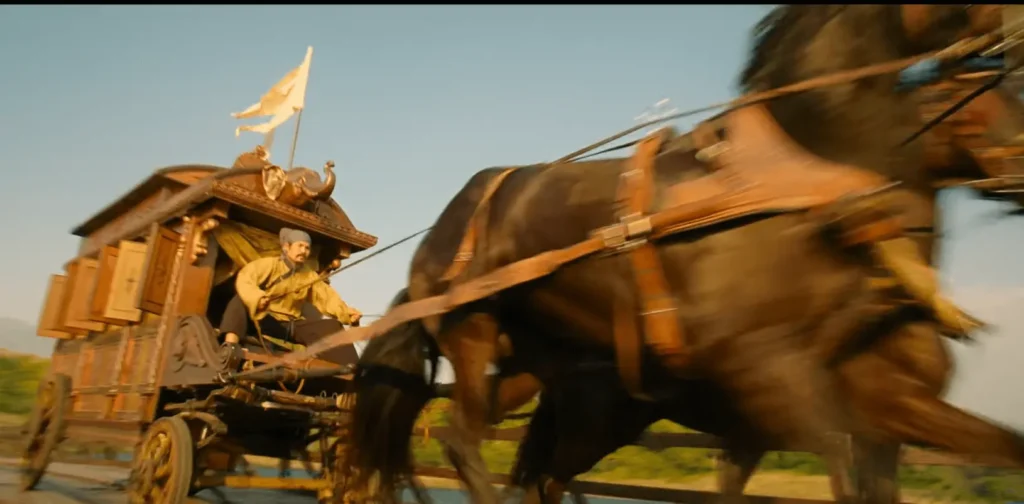
In the film, the charioteer is usually depicted as a Chinese man when the scene is set in Lanka. The character’s inability to understand Tamil allows Arulmozhi to converse freely with his companions without worrying about eavesdropping. This detail cleverly illustrates the language and cultural barriers present in the historical trade relations.
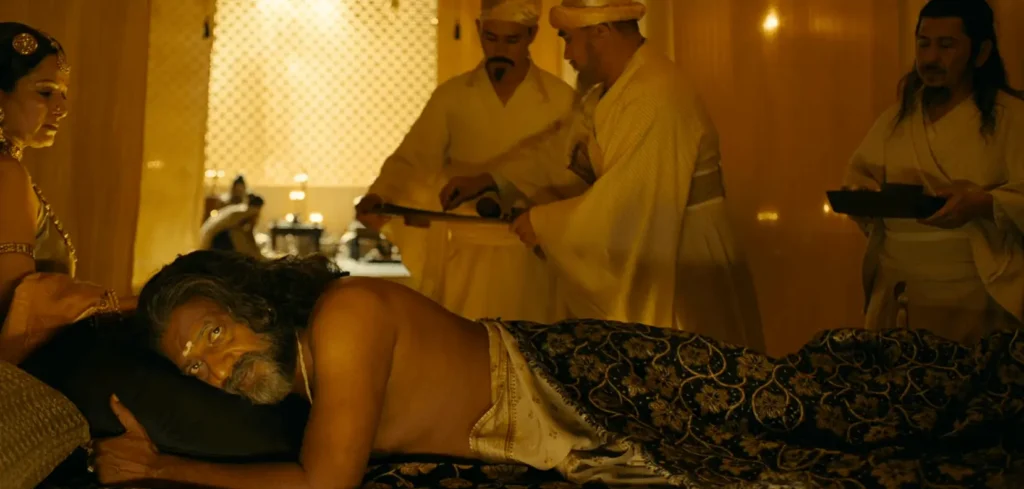
Another historically accurate detail is Sundara Cholan’s acupuncture treatment, highlighting the influence of Chinese medical practices in the region during the time.
Unnoticed Moments: Sembiyan Mahadevi & Sendhan Amudhan
One of the most poignant scenes, overlooked by many in the first viewing, happens in Pazhayaarai. As Sendhan Amudhan reaches Trisha to deliver news about Vandhiya Thevan, he nods at Sembiyan Mahadevi, who responds in acknowledgment. This loaded interaction may go unnoticed if you’re unfamiliar with the book.

Sendhan Amudhan is actually Sembiyan Mahadevi’s son, while Madhurantakan is the son of Oomai Rani. Will explain in detail soon.
Sembiyan Mahadevi’s Pioneering Influence
What’s striking in the movie is Sembiyan Mahadevi sporting a pottu (bindi). A surprising element, considering the times depicted, this choice moves away from the traditional depiction of widows.
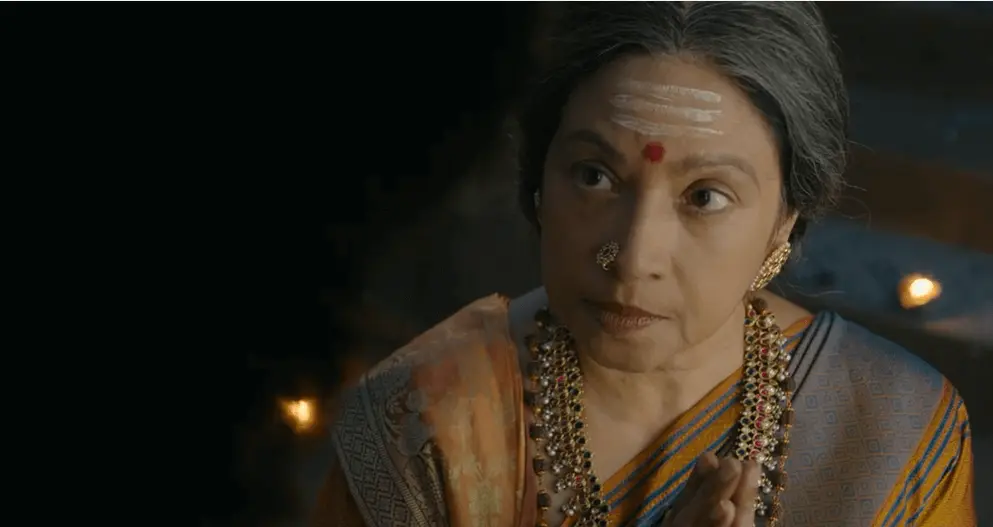
Sembiyan Mahadevi was the queen consort of the Chola Empire from 949 CE – 957 CE, wife of Gandaraditya Chola.
Following Gandaraditya’s death, Sembiyan Mahadevi, rather than committing sati or withdrawing to the Andapuram (the palace’s female quarters), chose a different path. She devoted herself to religious and social activism, becoming not only a revered dowager queen but also the matriarch of the Chola family for the next 50 years.
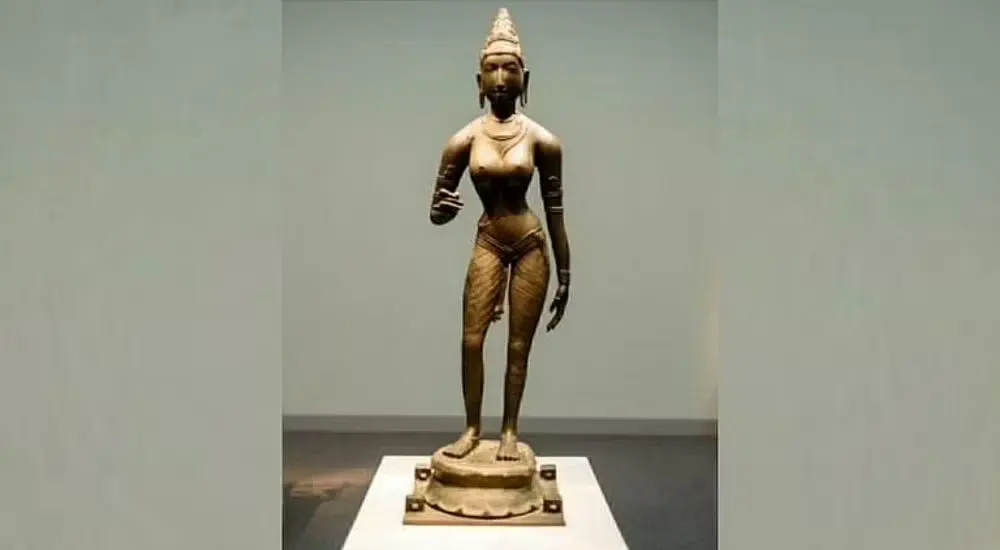
A pioneer in Kalpani (literally ‘stone-work’), Sembiyan Mahadevi initiated projects that transformed ancient brick and mortar temples into enduring granite structures. Her historical foresight led her to order the copying of ancient inscriptions before the reconstruction work. The temples and icons commissioned under her oversight bore a unique mark, and she donated jewels and bronzes to many temples, some built by her and others by her son, Uttama Chola( Madhurantakan).
Symbolism of Victory and Omen: The Red Lion Flag and the Comet
A symbolic scene depicts the triumph of Chola king Arul Mozhi Varman over Mahindan, the Sri Lankan king, as the waves on the coast of Lanka wash ashore the Lankan King’s red lion flag.

A powerful visual metaphor that conveys the complete and utter defeat of the Sri Lankan forces. The foamy waves that touch the Lankan shore symbolize the Chola army’s arrival on Sri Lankan soil, and their presence is a reminder that the Chola Empire is now the dominant power in the region.

In another instance, the scene where Nandhini and Pazhuvettayir order a convoy to capture Arulmozhi, you can spot a comet in the background. This comet reappears when the Pandiya’s are shown. The comet is a symbol of foreboding, hinting at a threat to the throne or signalling the imminent death of Aditya.

The Comet Scene in Ponniyin Selvan: A Symbol of Impending Doom
Scientifically, the comet seen in Ponniyin Selvan can’t be Halley’s comet as it passed by in 989 CE, by which time Rajaraja had already ascended the throne and Aditya was dead.
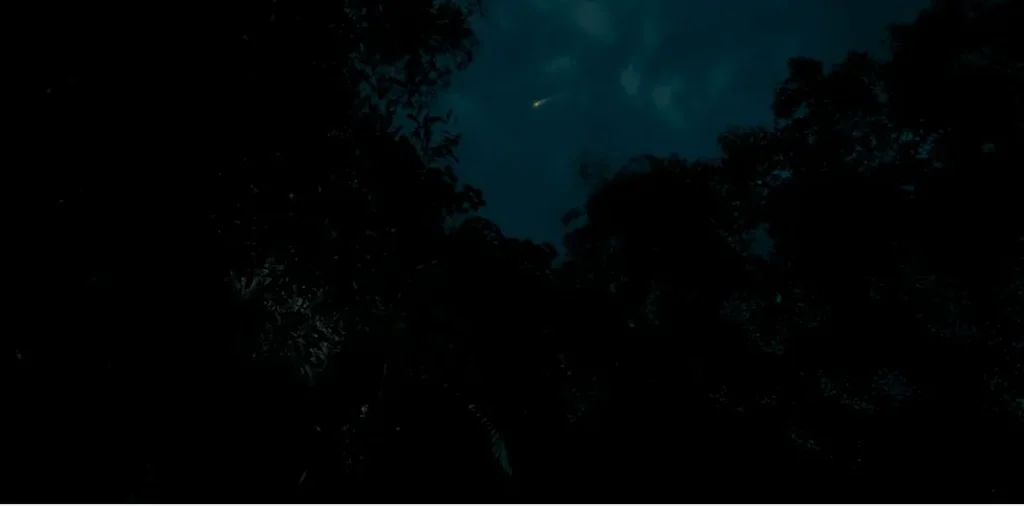
Historically, the appearance of a comet has often been interpreted as a sign of the impending death of a great person, usually a king. Notable examples include the comets associated with the deaths of Julius Caesar and King Harold. In 1910, when Halley’s Comet streaked across the sky, King Edward VII passed away. Around this time, Kalki (1899-1954) would have been around 11 years old and may have heard about the event.
In the context of the movie, the comet symbolizes the impending death of Aditya Karikalan. However, given Sundara Chola’s frail health, everyone interprets the comet as a prediction of his demise.
Sangam Poetry and Cinematic Genius: The Tale of Mandakini in Ponniyin Selvan
The meeting of Mandakini (Uma Rani), and Sundara Chola has a song playing in the background, it’s another example of Mani Ratnam’s brilliance.
It was so painful for me considering Mandakini’s fate. She doesn’t know she has children (will explain more on this soon); she considered Arulmozhi her son (considering it’s from her beloved one), and After years, she meets Sundara Chola again and lays down her life to save his.
Now if you try to understand more about that song, you will realise how painful it is to listen by watching Mandakini’s (Uma Rani’s) death.
This song is ‘Puranaanuru 242,’ one of the 400 songs from the ancient Tamil anthology (Sangam Poetry). AR Rahman adapted this song for the heartbreaking scene of Mandakini’s demise.
The original song was penned by Gudavai Keerathanar (was one of the poets of the Sangam period). Although he belonged to Gudavail, he visited many towns and made many friends. Perunjathan was one such friend from Ollaiyur. He was a chief Satthan (Chieftain) who was famous for his valorous deeds in battlefield.
The poet comes to the town of Ollaiyur and realises that his friend is no more. The whole town is mourning. There he composed this song out of great sadness.
In the poem, the poet questions the jasmine flower, asking why it still blooms after his death in Ollaiyur.
The lyrics go like this: “Young men don’t wear them. Women with bangles don’t pluck them. The whole town is sad because Satthan, the warrior, died. So, Jasmine, who are you blooming for? Why are you still blooming in vain?”

Nothing could better represent the tragic love and death of Mandakini. For what she lived for. It’s a painful question.
Love, Loss, and Forgotten Memories: Nandini’s Birth Secret
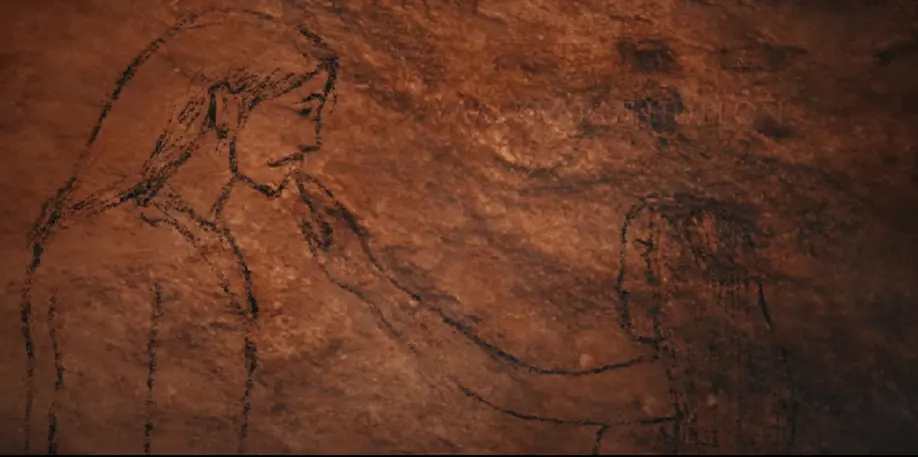
Sundara Chola and Mandakini were in a romantic relationship, but they were forced apart before Sundara Chola’s coronation. Overcome with heartbreak, Mandakini jumped off a lighthouse. However, Anirudha Bramarayan (was a leading minister in the court of the Sundara Chola) rescued her and sent her to Sri Lanka, while telling Sundara Chola that she had died. Meanwhile, Sundara Chola moved on, got married, and had children. His eldest son, Aditya Karikalan, was older than Nandini.
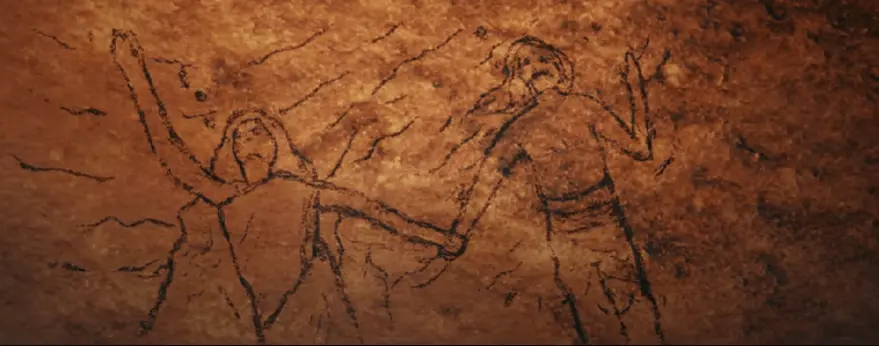
In Sri Lanka, Mandakini and Veera Pandian, both rescued by the boatman(Karuthiramaran) and with Mandakini having lost all her memories, spent a significant amount of time together. She got pregnant and decided to leave Sri Lanka, while Veera Pandian stayed back and lived with the Sri Lankan king.

On her return to Tanjore, Mandakini and her mute sister Vani encountered Sembian Mahadevi, who was also pregnant. They started living with her in the palace. Both women gave birth around the same time. Sembian Mahadevi’s son was stillborn, while Mandakini gave birth to twins and left them. Sembian Mahadevi adopted the male twin, Madhurantakan, and handed over the female twin, Nandini, to Azhwarkaddiyan’s (Nambi) parents. Vani was instructed to bury the supposedly dead infant, who, in reality, survived. She took the child, Sendhan Amudhan, and left.
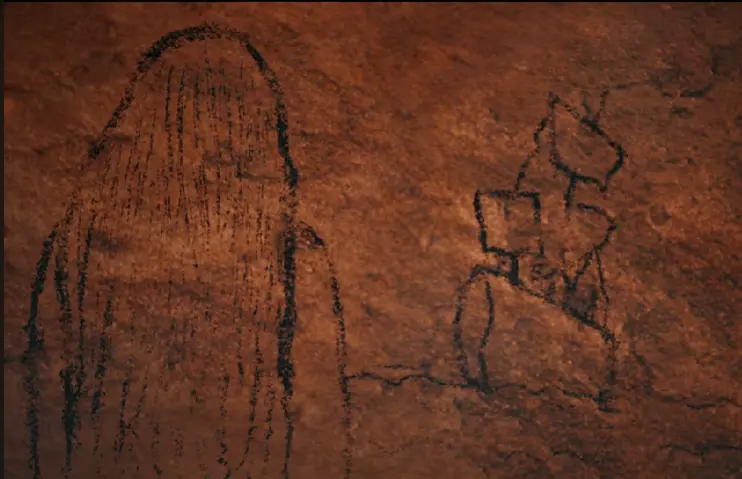
Meanwhile, Veerapandiyan sent Karuthiruman (boatman played by Yog Japee) to relay a message to Mandakini, who was back in Kodi Karai under her father’s care. However, upon arrival, he found that Mandakini had suffered another accident, which had restored her memory.
She could not recognise Karuthiruman, which meant she had no recollection of what had transpired between her fall from the lighthouse and her recent accident.
Was Nandini ever in love with Aditya Karikalan?
Nandini, a creation of Kalki, is one of the most multifaceted characters you will encounter in “Ponniyin Selvan.” She is like a diamond. Not only is she stunningly beautiful, but she’s also incredibly intelligent. Her willpower and ingenuity make her a unique femme fatale in literature.
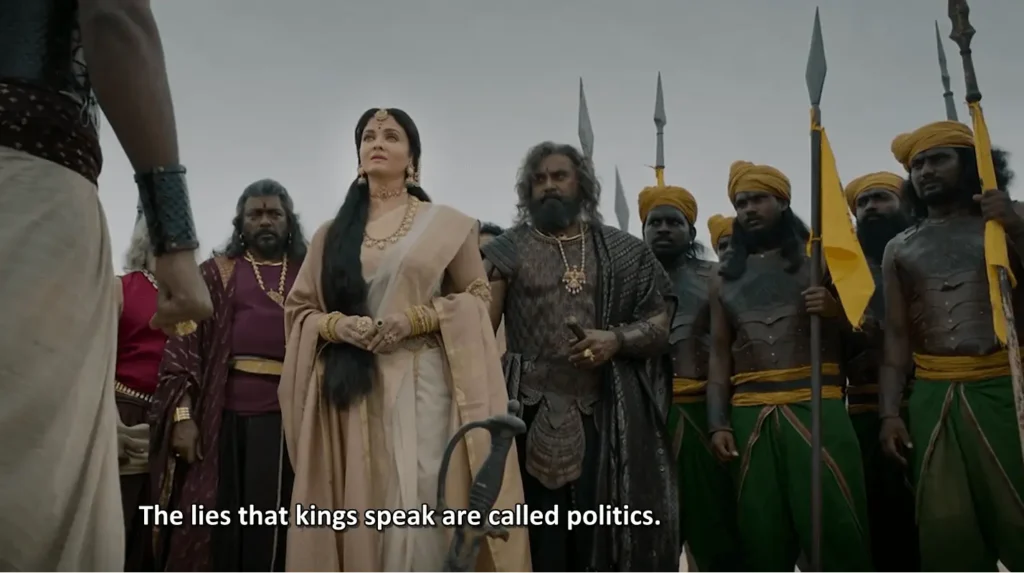
She has been described as treacherous, vicious, venomous, lethal, and dangerous. These aren’t misjudgments, as Nandini is truly the most formidable character in the novel.
Understanding Nandini takes some time because, much like a finely cut diamond, she has numerous aspects to her persona. The novel introduces us to her character well before we meet her. Kandan Maran speaks of Periya Pazhuvetarayar’s marriage to a younger woman, and teases him about his obsession with her. Later, Azhwarkadiyan shares a censored version of her life story, painting her as a sisterly figure and stoking our sympathy for her as a young woman forced to marry an older man.
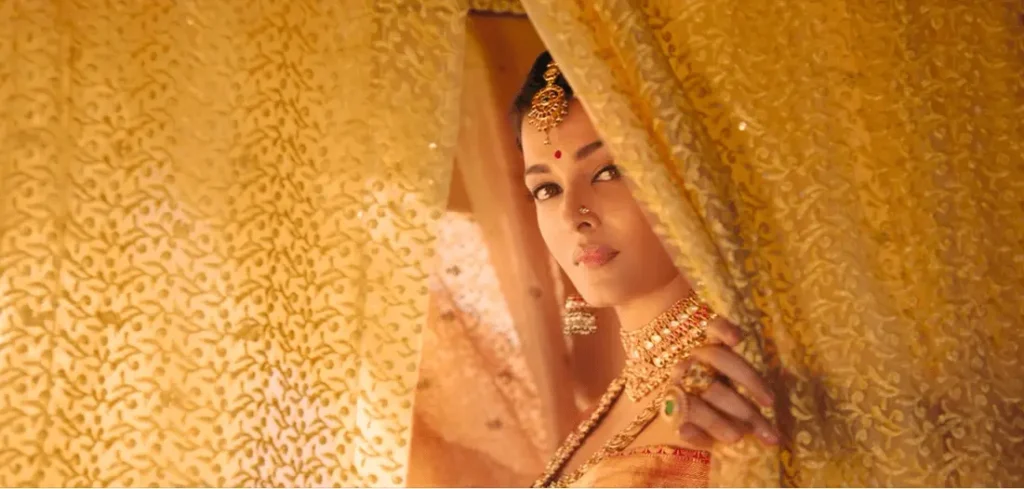
We first meet Nandini through the eyes of Vandiya Devan, entranced by her beauty, as she peeks out from the curtains of a veiled palanquin to investigate the disturbance in her path.
Aditya Karikalan’s frank confession to Parthibendran uncovers more about Nandini’s history. It seems that Nandini mastered her unique brand of seduction with Aditya Karikalan. But was it love, or was it a longing for the power she would gain if she were to marry the Crown Prince? It’s hard to say for sure.
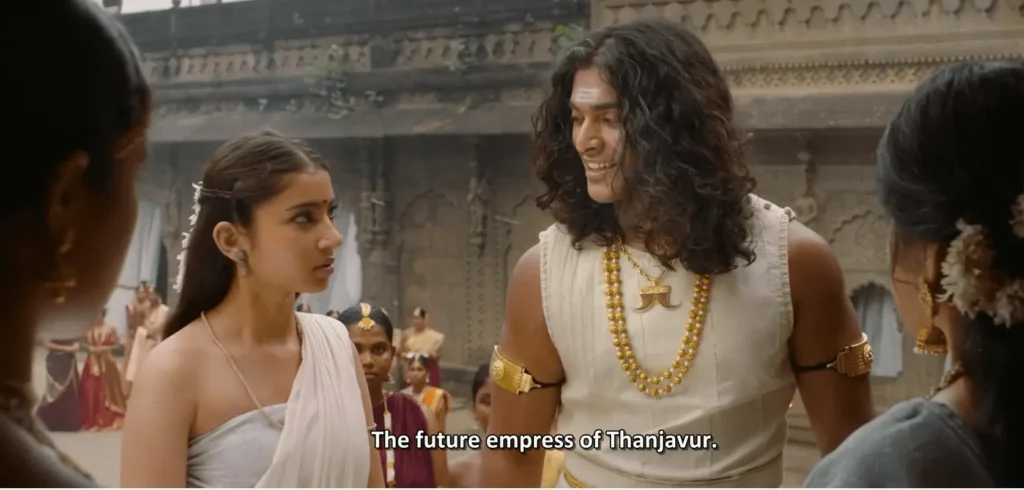
What we do know is that the deep-seated jealousy between Kundavai and Nandini originated from their childhood. Nandini coveted Kundavai’s status and influence as the Princess, while Kundavai envied Nandini’s beauty.


Nandini’s obsession with power drove her, I believe, and her confession to Aditya in the end holds some truth, in my opinion
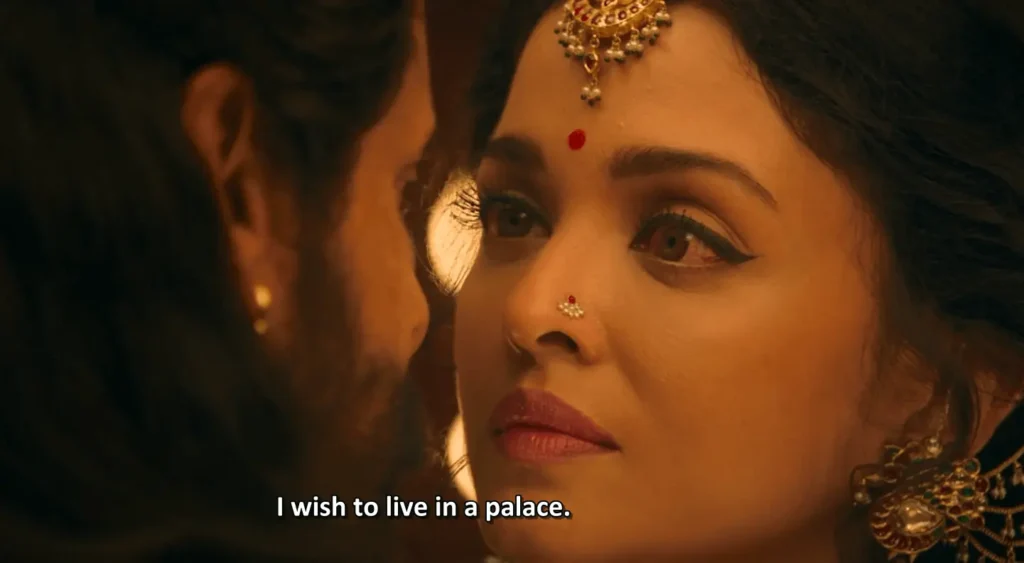
Nandini v/s Kalpana
Do you remember the first movie that Mani Ratnam made with Aishwarya Rai?
It’s Iruvar (1997).
In Iruvar, Aishwarya played a character similar to Jayalalitha. There are striking similarities in their ruthlessness.
It’s as if Mani Ratnam saw reflections of Nandini in Jayalalitha and vice versa. Like Nandhini in Jayalalitha or a Jayalalitha in Nandhini. But both are versions of Lady Macbeth considering their character shades.

That can be a reason why he picked Aishwarya for this role.
A scene in “Iruvar” where Kalpana (Aishwarya Rai) sows seeds of doubt in Anandan’s (Mohan Lal) mind is particularly reminiscent of Nandini’s manipulations.
She asked Anandan, “Who is bigger? An actor or a CM? Don’t you to wish to be the CM?“
Anandan thought about her question. He had never considered himself to be a competent to his friend Tamizhselvan. But Kalpana’s words made him wonder if he could be.
Fast forward 25 years, and the same Aishwarya Rai masterfully brings Nandini to life on screen with the same shades of Kalpana.
Kalpana’s words were similar to what Nandhini had said to Pazhuvettarayar. Nandhini had charmed the elderly Pazhuvettarayar and planted the seeds of desire in him.

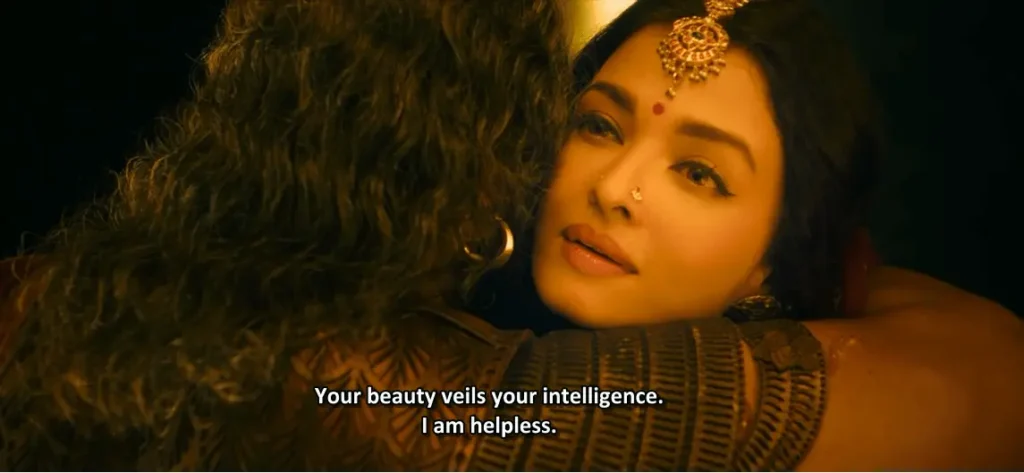
She had told him that Madurantakan should claim the throne, by that the power will always lies in Pazhuvettarayar.
But Nandhini had failed in her attempts unlike Kalpana.
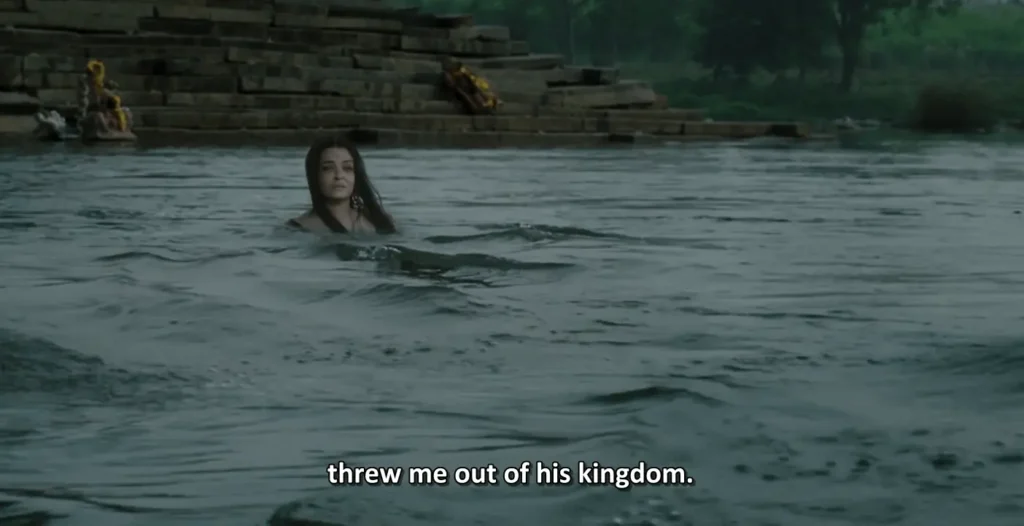


Please share your thoughts in comments.
1 Comment